By Steven Weingartner
Chariot warfare in the Near Eastern Bronze Age was generally a grim business, but it did have its lighter moments. One of these occurred while the armies of Egypt and Kadesh stood poised for battle outside the gates of the Syrian city in the 42nd regnal year (c. 1462 bc) of the Pharaoh Thutmosis III. The fighting was due to begin in customary fashion, with the clash of opposing chariot forces, when Durusha, Prince of Kadesh, caused a mare to be released in the open space between the armies.
Presumably the prince thought the mare would fire the passions of the hot-blooded stallions that drew Thutmosis’s chariots, supplanting their martial ardor with lustful desire and making them uncontrollable at the precise instant he unleashed his own chariotry against the Egyptians. His gambit might have worked, were it not for the quick thinking and quicker actions of an Egyptian officer named Amenemhab. In his tomb biography inscribed on the walls of his funeral chamber near the Egyptian capital of Thebes, he proudly recalls how “I pursued her [the mare] on foot, and I ripped open her belly; I cut off her tail and I set it before the king.” The crisis passed: the horses’ lust was cooled and they could turn their attentions to the job at hand. Shortly thereafter the Egyptians defeated Durusha’s army and stormed the city, with Amenemhab leading the assault.
Durusha’s tactic for dealing with the elite Egyptian chariotry might seem an act of desperation, and rather comical to boot, but at least it shows a sensitivity to and understanding of the nature of horses—which were, for obvious reasons, key to chariot operations and thus an important factor in the tactical development of chariotry and chariot warfare. This is more than can be said for many modern scholars who have addressed this subject.
A case in point can be found in the writings of Mario Liverani, a respected authority in the field of Ancient Near Eastern studies. In International Relations in the Ancient Near East, 1600-1100 bc, Liverani, discussing the Battle of Megiddo (c. 1481 bc), blithely dismisses the imperatives of equine behavior as a false guide to how chariots were used. Liverani cites as his authority “celebrative inscriptions” and “iconic representations,” that is, ancient texts and images such as wall reliefs, tomb paintings, and the like. In these media, chariots are depicted as charging at speed into an enemy force, usually of massed, close-order infantry, thus affecting what Liverani calls the “penetration of a horizontal line by a vertical wedge” of chariotry.
Liverani is wrong in his belief that the preferred and principal tactic in chariot warfare was the direct frontal assault. Although ancient texts and iconography provide many useful insights on the employment of chariotry, they cannot supercede equine behavioral traits that evolved over the course of many millions of years and which were well established by the time the domesticated horse was first used in the Near East as a draft animal (around the beginning of the third millennium bc)—and which have not in the leastways changed in the three millennia since the demise of military chariotry. The reality of equine behavior, however inconvenient for Liverani and those who share his views, is an incontrovertible fact; as such, it is more reliable and more authoritative as a source for what chariot warfare entailed than celebrative inscriptions and iconic representations. Biology trumps ideology every time as both a determinant and a trustworthy source of what horses will and won’t do in battle.
What horses won’t do is run into solid objects. And horses tend to perceive a formation of massed, close-order infantry as seemingly solid as a stone wall. As if that weren’t discouragement enough for the horses, the formation is also bristling with spears and composed of men who are shouting and gesticulating in a manner most terrifying to the animals. Horses can be made to charge into such formations but in doing so they are going against their own better instincts. And they are liable at any time to obey those instincts rather than the commands of their charioteer, balking in front of the formation or shying away from it. Their behavior is no mystery; it is actually quite intelligent and sane. They do not want to bull their way into formation because, it hardly needs be said, they are horses, not bulls.
Bronze Age commanders were equally reluctant to employ their chariotry in direct frontal assaults, and not only because their horses were disinclined to execute this tactic. It is important to grasp that, while chariotry was the elite combat arm in Near Eastern armies of the Bronze Age, infantry was the primary combat arm, outnumbering chariotry by a huge margin. In the standard field army the ratio of chariotry to infantry was usually about 1:100, that is, one chariot (with a crew of three: driver, warrior, and the so-called third man, i.e., a runner/man-at-arms) for every one hundred infantrymen.
The main-body infantry of civilized armies was no mere armed rabble, but rather a sophisticated combat arm comprising a mix of foot soldiers and archers, organized in unit groupings of various sizes usually based on multiples of 5 or 10. The battle alignment was the formation of densely packed spearmen generically known as the phalanx. In addition to spears, the foot soldiers were armed with secondary weapons such as swords and daggers; they were equipped with protective gear (helmets and shields were standard, and some form of body armor was common); and they were highly disciplined and trained to maneuver and fight in formation. Archers were arrayed by unit on the phalanx’s flanks or just behind it, and though they wore lighter protective gear to facilitate the use of the bow and enhance their ability to swiftly maneuver and redeploy, they too carried secondary edged weapons for close-quarters fighting.
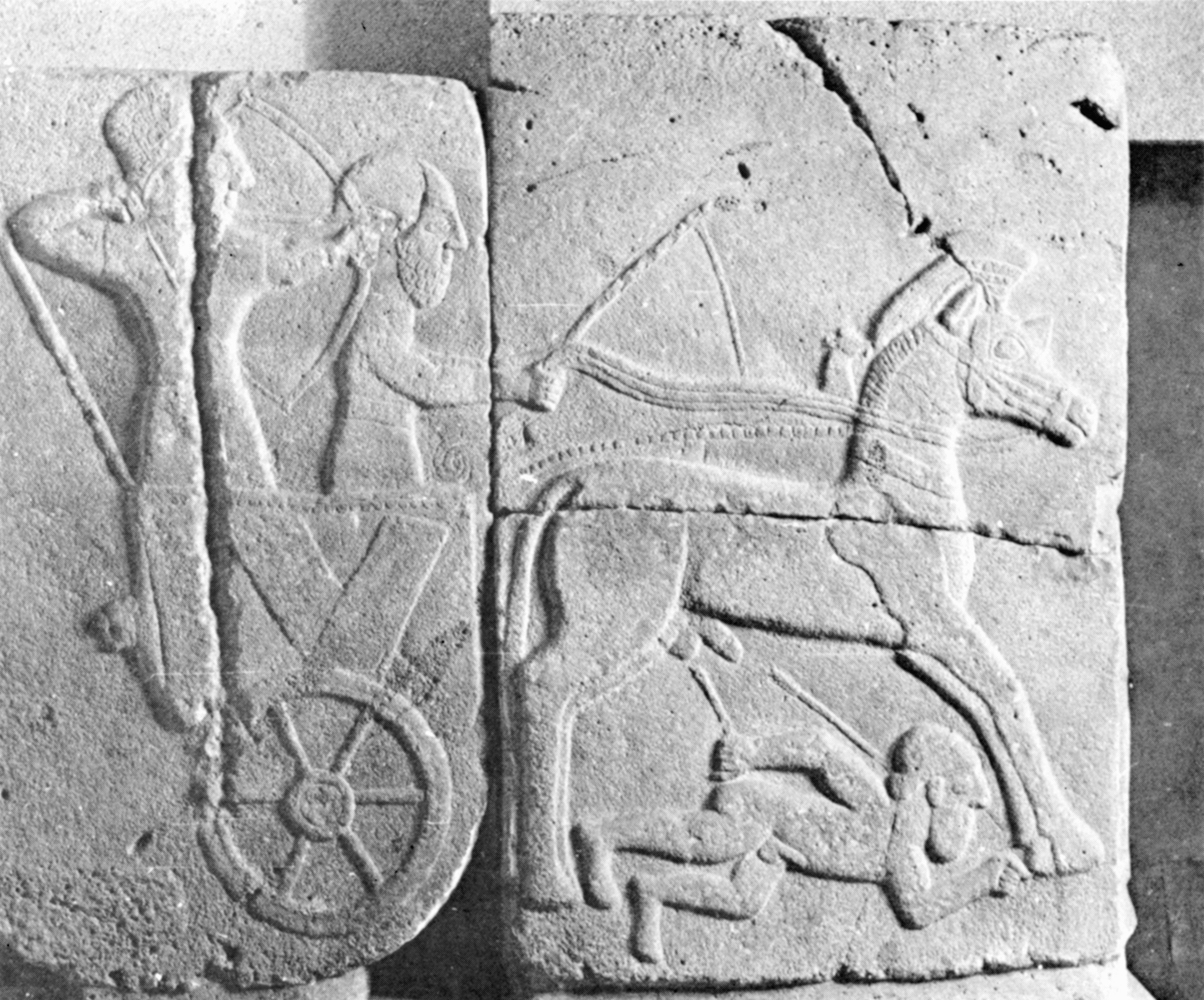
Given the competency and numerical superiority of infantry in civilized armies, chariotry was not practical for use in frontal assaults, as a weapon of “shock,” that is, as a weapon that could be hurled against an infantry phalanx in order to rupture the formation with the shock of collision. In this context “shock” refers to the weight and inertial momentum or impetus of an object moving at speed to shatter a stationary entity. To assume that chariotry could be used in this manner is to endow it with the capabilities of a modern tank. Insofar as chariot horses and crewmen were outfitted with substantial protective gear (e.g., helmets and body armor for equines and humans alike), it is fair to categorize the light, spoke-wheeled war chariot as a crew-served armored fighting vehicle, one of history’s earliest; as such it had certain uses in common with those of modern armored fighting vehicles. But collision-shock was not one of them. The Bronze Age chariot was not a tank; it was not a kinetic-energy weapon.
Nor was a chariot formation a solid body. It was, rather, a grouping of individual vehicles. Even when moving at speed, chariots in formation lacked the numbers and the close configuration, hence the weight and mass, required to generate phalanx-shattering force. The average phalanx was sturdier and stronger than most chariotry formations and could not be ruptured by a frontal assault of chariotry so long as the foot soldiers kept their nerve and held their positions.
If the foot soldiers did hold their positions, and if a commander of chariotry was foolish enough to launch his squadrons into them, the encounter would likely end in disaster for the chariotry. The first chariots to strike the phalanx would certainly inflict some casualties among the foot soldiers and a few vehicles might penetrate into the secondary ranks. Even so, infantrymen who remained steadfast and unyielding would break the charge, with most of the vehicles that composed the tip of Liverani’s “vertical wedge” of chariotry coming to grief on the phalanx’s hedge of spears. The horses, pierced by one or more spears, would be rearing and screaming in pain, and many of the chariots would be overturned, spilling the crewmen onto the ground. In the next instant the following chariots would crash into the leading vehicles; a pileup would ensue, resulting in fearful carnage as the foot soldiers swarmed amidst the wreckage to slaughter the dismounted chariot crewmen.
If chariotry was not used against infantry in direct frontal assaults, how, then, did these formations actually fight?
In answering this question one must first consider the issue of attack speed. Bronze Age chariotry did not gallop into battle. Although chariots could achieve a top speed of about 25 mph on level ground, they were commonly “charged” at a canter or a fast trot, about the speed of a running man, between 8 and 12 mph. Attacking at speed would have obviated the use of the bow, the chariot warrior’s primary weapon, and the javelin. As M.A. Littauer and J.H. Crouwel have observed in several of their many articles on chariotry, a chariot driven at speed on even the most favorable terrain provides a very rough ride for its passengers, who must brace themselves against the sides of the chariot box, clutching whatever they can—rim, rails or reins, a “balance thong” attached to the rim, or each other—to avoid being pitched out the rear or otherwise tossed from the jolting vehicle. In these circumstances the chariot warrior would find it most difficult, if not downright impossible, to fit an arrow to his bowstring, much less to shoot the dart with any accuracy. Needless to say, the chariot warrior would experience the same problems in attempting to aim and throw a javelin.
There were other reasons for not driving at speed, apart from the negative effects of vehicle instability on weapons use. Galloping was not good for the horses because it wore them out too quickly, and to little or no gain. Why charge a phalanx at speed if you weren’t going to charge into it? But, as contended, Bronze Age chariotry did not normally employ the tactic of the frontal assault-to-collision against infantry. So the galloping charge served no purpose, even as it put the chariots in jeopardy faster by bringing them too quickly within range of the phalanx’s archers and auxiliary missile troops such as slingers and javelin throwers.
Also at issue was the number of arrows the chariot warrior could shoot, if indeed he could shoot any at all, before he found that his fast approach had brought him right up against the phalanx’s front rank. The faster the approach, the fewer the arrows that could be shot at the phalanx before the chariot was forced to either turn aside, wheel about, or charge headlong into the formation. As well, at this critical juncture those chariots that had driven too close to the phalanx might be further imperiled by small parties of men-at-arms specially detailed to rush out of the formation to attack the vehicles.
Chariot warriors could fire more arrows at a phalanx by advancing toward it at a slower pace, that is, at a canter or a fast trot. What’s more, they could inflict more harm on the phalanx, and at less danger to themselves and to their drivers and runners, if they advanced no further than to within maximum effective bowshot of the phalanx.
Here one would note that archery employed against massed, close-order infantry equipped with shields is only effective when used for plunging fire, that is, for arrows shot in a high arcing trajectory so that they fall, or plunge, into the middle and rear ranks of the infantry mass. Arrows shot at the front ranks of an infantry phalanx are necessarily shot at flatter trajectories. The targets are fewer because the archer is shooting at the first line only and, because the infantry would be carrying shields, most of the arrows, not counting the rare lucky shot, would do little damage.
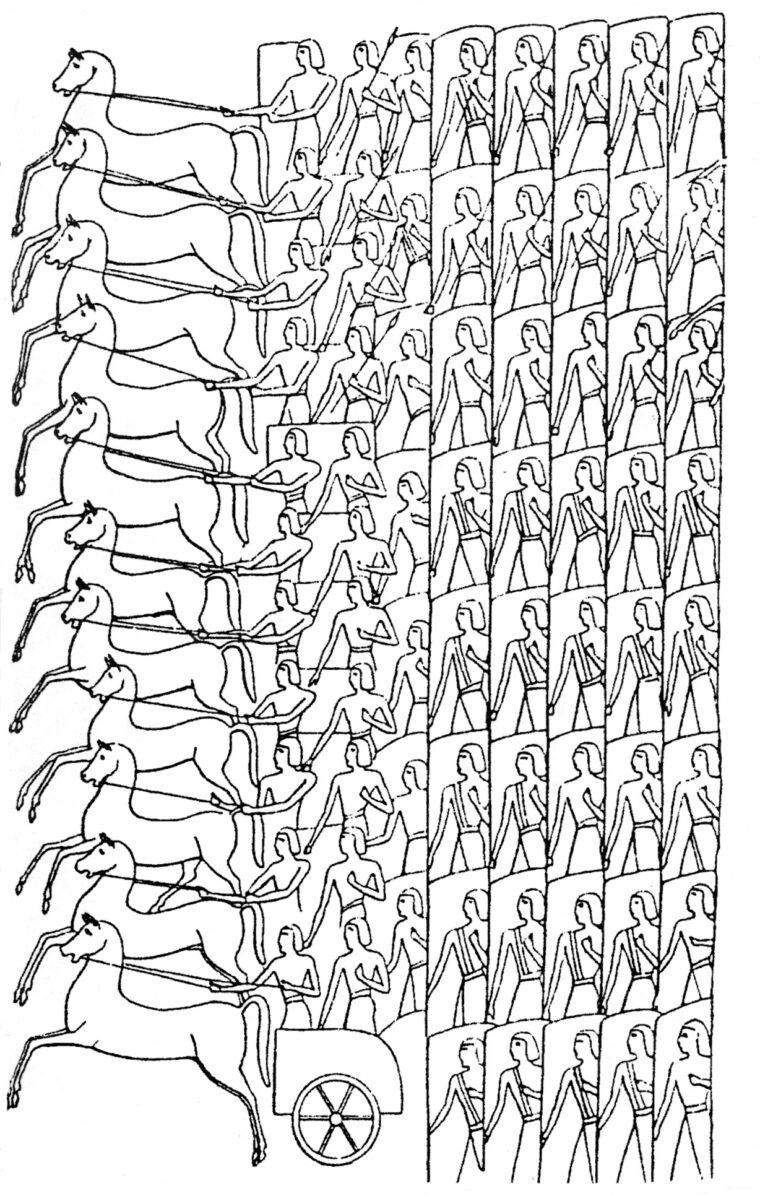
Velocity and penetrating-force performance tests such as those conducted by Richard A. Gabriel and Karen S. Metz (and documented in their book, From Sumer to Rome: The Military Capabilities of Ancient Armies) reveal that arrows, even those shot from powerful composite bows, could not penetrate the large wooden, hide-covered shields that well-equipped infantry carried. Additional shielding was provided by protective gear, including bronze helmets and leather skullcaps, textile body armor, and corselets and tunics made of bronze or leather scales or lamellae.
Therefore, in an engagement between chariotry and infantry, the chariotry would attack the phalanx from a distance (i.e., maximum effective bowshot), shooting arrows in high trajectories to bring plunging fire on the formation’s middle and rear ranks. The tactics used by the Normans at the Battle of Hastings in ad 1066 provide a model for how Bronze Age chariotry might have been employed, especially against infantry. In that battle the Normans attacked the Saxon shield wall with alternating arrow volleys and cavalry charges. The cavalry was made up of “lances,” mounted knights accompanied by dismounted men-at-arms, that formed larger groupings called “conroys.” The conroys would intermittently charge, forcing the Saxons to lower their shields to defend against the slashing swords and thrusting spears of the knights and their retainers. After a few seconds of inconclusive combat the conroys withdrew, at which point archers loosed clouds of arrows in high trajectory at the Saxons. On each occasion most Saxons managed to raise their shields, thus protecting themselves from the plunging arrows; but also on each occasion a few Saxons failed to get their shields up in time. Struck in the head or upper body by arrows, they were either slain outright or severely wounded. Dead or incapacitated, it made no difference: They removed themselves, or were removed, from the shield wall, causing the wall to contract by the width of several men.
By alternating arrow volleys and cavalry charges throughout that long day of battle (the fighting lasted some 10 hours, from early morning until after nightfall), the Normans took a steady toll on the Saxon soldiery, reducing their ranks a few men at a time, and forcing the shield wall to contract with each reduction. Eventually the shield wall’s contractions left its flanks exposed (hitherto the shield wall had been anchored on and protected by steep drop-offs at either end). Whereupon the Norman cavalry charged around the flanks into the Saxon rear, and the Saxons, realizing that their position was no longer tenable, broke and ran—and were slaughtered.
Bronze Age chariotry probably employed similar tactics, prefiguring the lance-conroy system by more than two thousand years. Thus, keeping in mind Norman tactics at Hastings, one can envisage chariotry and infantry unfolding as follows.
First, let us assume, for the sake of conjecture, the battle order of an Egyptian chariotry “host”—typically 250 vehicles divided into five squadrons of 50 vehicles. Each chariot had a crew of three: the driver/shield bearer (charioteer); the warrior (archer); and the “third man” (runner/man-at-arms). Thus, a host would number 750 fighting men (including the charioteer, who carried swords and daggers and who was expected to use them, as circumstances warranted and when he was called upon to do so, in close-quarter melees with opposing chariotry).
The chariotry would assault by squadrons, with possibly four of the units committed to action while the fifth was held in reserve. Each squadron, comprising five troops of 10 vehicles, might advance in a single line abreast, in one or more columns, or in some combination of columns and lines-abreast, with a man-at-arms running alongside each vehicle. When the vehicles had cantered or trotted to just within maximum effective bowshot of the phalanx, the chariot warriors would salvo their arrows. The chariots might then halt to allow the firing of several stationary volleys, or they might keep moving, pivoting in unison to execute a half-turn, or caracole, to the left or right; or divide at the center with the two wings driving in opposite directions; or wheel about in a 180-degree turn. If the chariots turned right or left, they would canter parallel to the phalanx’s battle line, while the warriors fired their arrows continuously into the infantry mass.
The chariot warriors would not fire at the front rank, which would present itself as a shield wall and thus be more or less impervious to missile attack. Instead they would direct high trajectory fire into the middle and rear ranks, thereby endeavoring to weaken the infantry mass through plunging fire.
When the chariots reached the end of the battle line they would break contact, drive back to their start point, reform, and briefly rest up for another attack.
In the meantime the third men attached to the chariots would remain on the battlefield to establish a skirmish line at the point of the vehicles’ halting/turning. The skirmish line would serve to repel sorties by infantrymen and archers from the phalanx and provide an initial impact/line of resistance for opposing chariotry that was sent to contest the ownership of the open space.
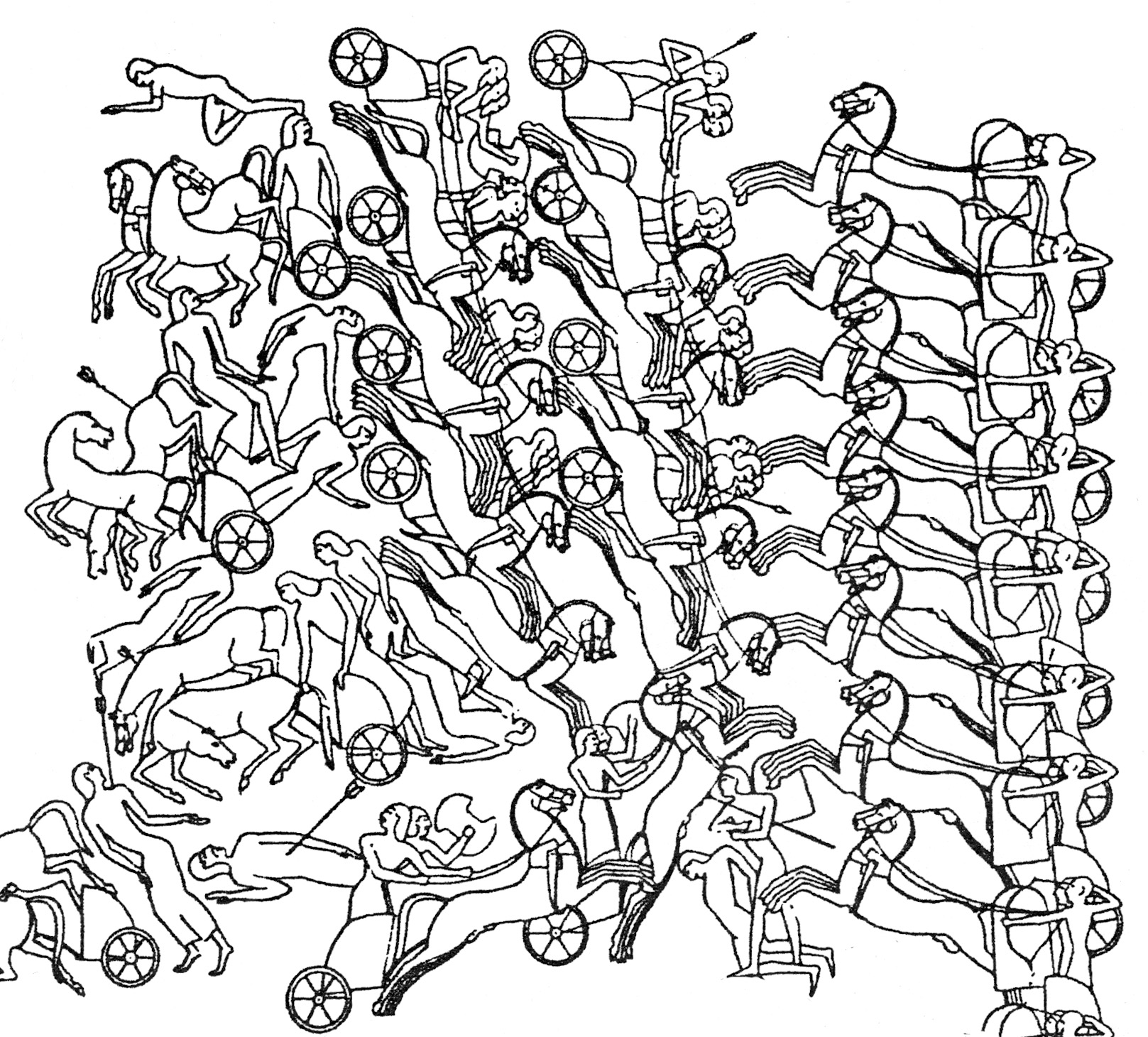
Alan R. Schulman, the world’s leading authority on Egyptian chariotry, compares the third man to modern armored infantry. The comparison is apt. As mentioned, the spoke-wheeled war chariot was one of warfare’s earliest crew-served armored fighting vehicles. And, like their modern variants (tanks in particular, but also the infantry/cavalry armored family of vehicles such as the Bradley series), chariots were most effective when they were supported by infantry. Chariots, like tanks, could and did fight without infantry support, but this was always a dangerous proposition. For that reason the third man was the key component to every chariot crew, providing infantry support and protection against enemy foot soldiers and, eventually, against the crews of enemy chariots as well.
As mentioned, the third man in most Near Eastern chariotry ran into battle next to or behind his vehicle. In the ideal set-piece battle, he did not have far to go: The opposing armies initially formed up at a distance of perhaps 400 yards (i.e., well beyond the range of even the most powerful bows), and the third men and their chariots advanced about half that distance or a little more, some 200-250 yards, bringing the chariotry formation to within 200-150 yards of the enemy phalanx. At this distance the chariot warriors would fire their arrows and turn their vehicles, while the third men set up their skirmish line.
The Hittites, however, revised their tactical system during the reign of Muwatalli (1310-1280 bc), placing the third men in the chariots, which allowed them to ride into battle on the chariot before dismounting to fight. This system permitted the arming of the Hittite third man with a lance, 7 to 10 feet long, a superior weapon when used on foot against attacking chariotry (the third man did not use his lance while riding in the chariot because the weapon was difficult to wield in the moving vehicle); it further meant that the Hittite third man would not expend energy getting to the battle zone. But there was a drawback to the arrangement: the Hittite chariot was, per force, bigger and heavier than most Near Eastern variants, and its axle was set in the center of the vehicle as a necessary enhancement to stability. This made it slower and less maneuverable than the lighter, more stable Egyptian chariot with its axle set at the rear of the vehicle.
The movement of the chariots through the battle zone, as imagined and described here, resembled the maneuverings of the Spanish tercios of the 16th and 17th centuries ad, whose mounted horsemen discharged pistols instead of shooting arrows. Like the units in a tercio, the chariots of one squadron were clearing the battle zone while the chariots of another squadron were entering it. The squadrons executed these movements again and again, cycling through the battle zone until the horses were blown, the crews were exhausted, the arrows expended.
In such a battle the chariotry’s humans and horses would both find themselves much taxed in energy and spirit by the physical and emotional strains of battle. The chariot warrior would suffer the most in this regard—more than his driver, more than his horses. The main cause of exhaustion was his use of the composite bow. This was a difficult weapon to master, requiring a well-trained man at the peak of physical conditioning. Gabriel and Metz assert that an ancient archer was expected to accurately shoot five arrows per minute, and could get off 10 or 12 arrows at maximum pull before his performance was seriously degraded by fatigue. In other words, a chariot warrior could use his bow for about two minutes at most before he had to retire from the battle zone to give his arm a rest.
The foot soldiers would also be dealing with fatigue, and there would no rest for them if the chariot squadrons maintained their cycle of attacks. Plunging arrow fire from the chariots would steadily wear down the phalanx’s ranks, causing the formation to contract, thereby disrupting its cohesion. Eventually the phalanx’s cohesion would be fatally compromised and the formation would begin to fragment, at which point the opposing phalanx would advance to deliver the death blow.
The only effective counter to this tactic of attrition was to oppose chariotry with chariotry. Thus, major Bronze Age battles tended to be set-piece affairs in which the clash of chariotry comprised the first phase. It was in this phase that the third man came into his own as a combatant. He would then undertake to attack enemy chariot crews and slay their horses, actions that occurred when the opposing chariot squadrons became intermingled and the resulting traffic jams slowed the movement of the chariots or stopped them altogether. In the ensuing melee the third man would also find himself battling his counterpart, the third man attached to an enemy chariot.
This initial clash of chariotry often decided the outcome of the battle. The foot soldiers who remained on the battlefield while their chariotry was either destroyed or driven off might well conclude that the battle would inevitably end in their own defeat. Daunted by this prospect, their morale would plummet along with any willingness to stand their ground. The foot soldiers might then break formation and run away, whereupon the opposing army commander would release his reserve chariotry squadron. Racing at speed along the flanks of the fleeing troop mass, the reserve chariots would overtake the hapless foot soldiers and cut off their escape route, thus setting the stage for a battle of annihilation to be executed by follow-on infantry. Meanwhile, other chariots would pursue and harry the retreating soldiers to keep them dispersed, maximize their confusion, and prevent them from reforming.
The preceding scenario is not necessarily applicable to chariotry outside the Near East or in the post-Bronze Age centuries of antiquity. Aegean chariots, for example, might have been used more as transport vehicles for delivering warriors to the battlefield than as a mobile platform for firing arrows. This would be consistent with the Homeric warrior’s disdain, so often displayed in the Iliad, for military archery and the archers who would use their weapons against men—an attitude that might be attributable to the sense that the bow was an unmanly weapon because it killed from afar (and thus unfairly and ingloriously), but also to the relative ineffectiveness of arrows against well-armored warriors. Littauer and Crouwel observe in one of their essays that nowhere in any visual representation of Mycenaean chariotry do we find depictions of bows being used in combat, an absence with obvious and far-reaching tactical implications. The tactics of chariot warfare in ancient India and China were likewise influenced by the ethos of the chariot warriors. In fact, one could make an argument for the ethos of the warrior caste wherever chariotry was employed as a primary determinant of chariotry tactics.
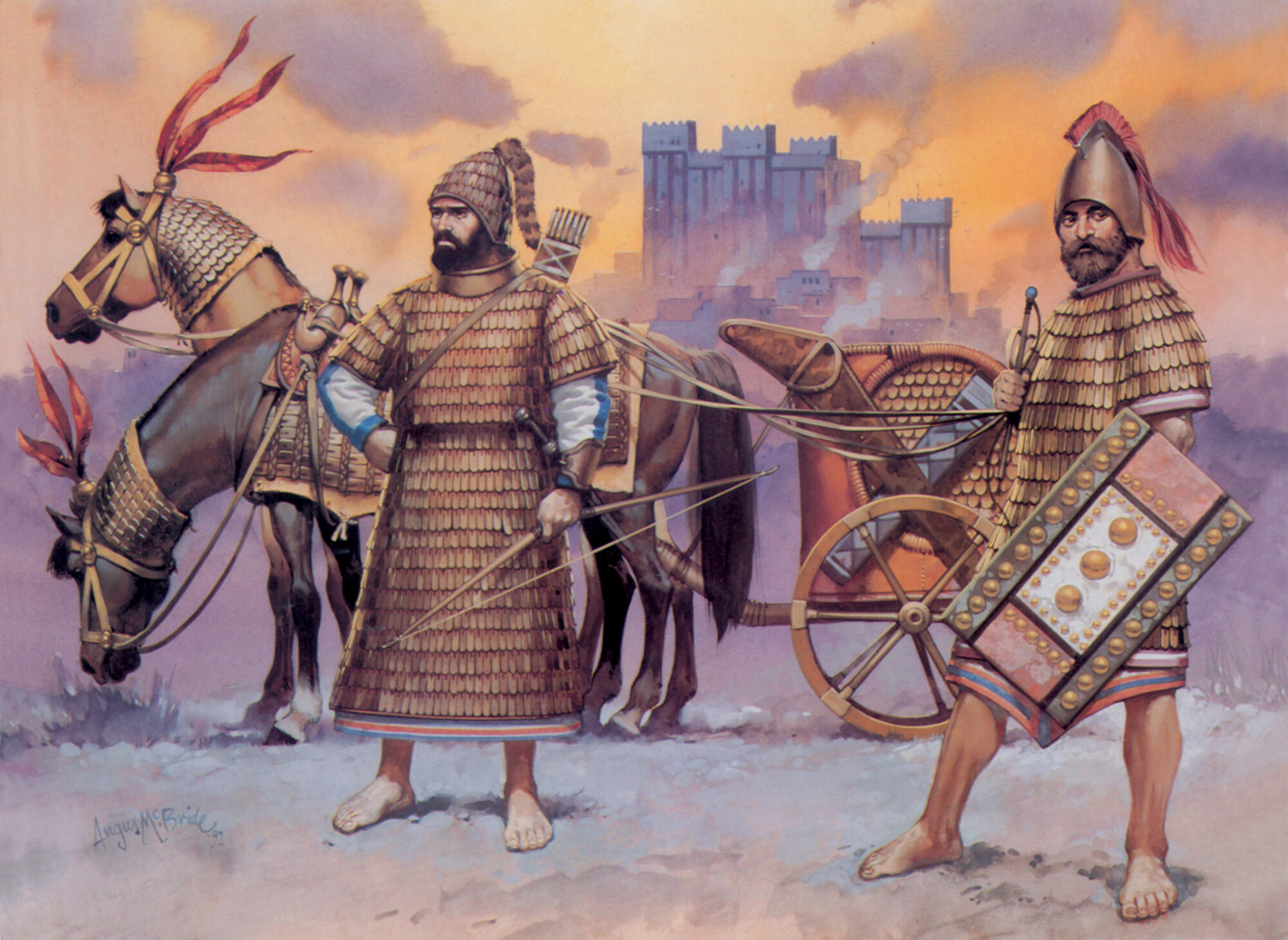
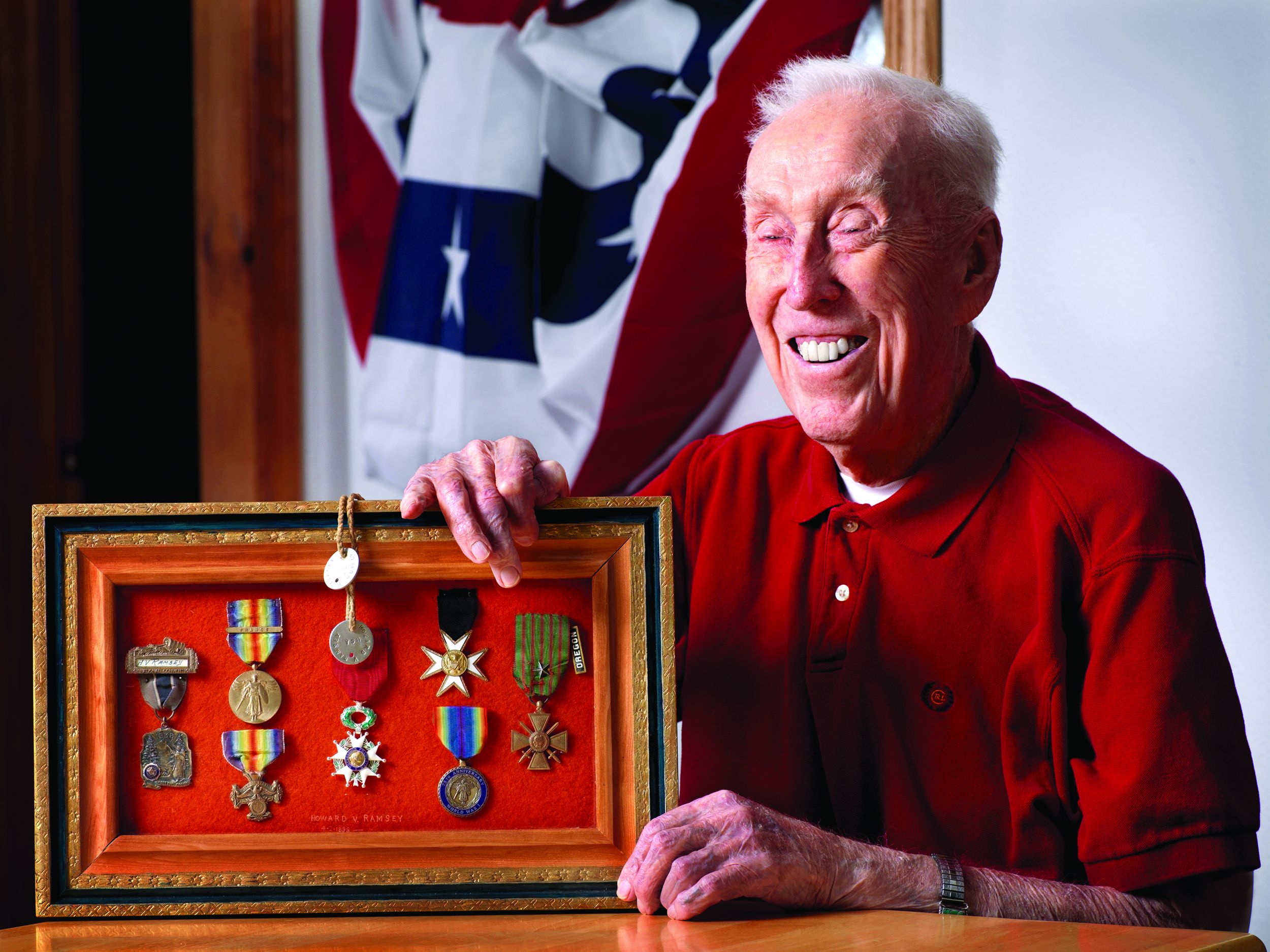
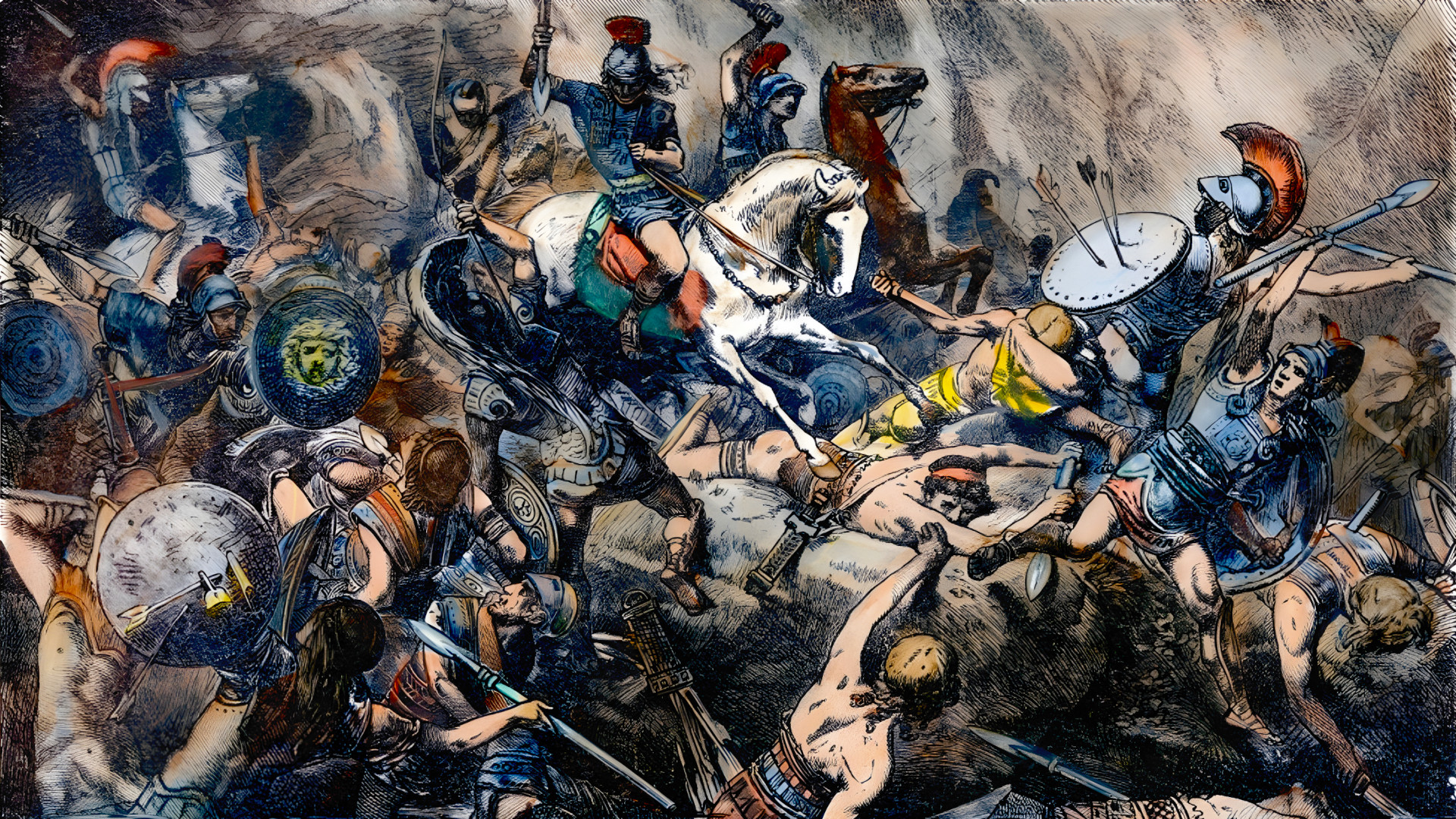
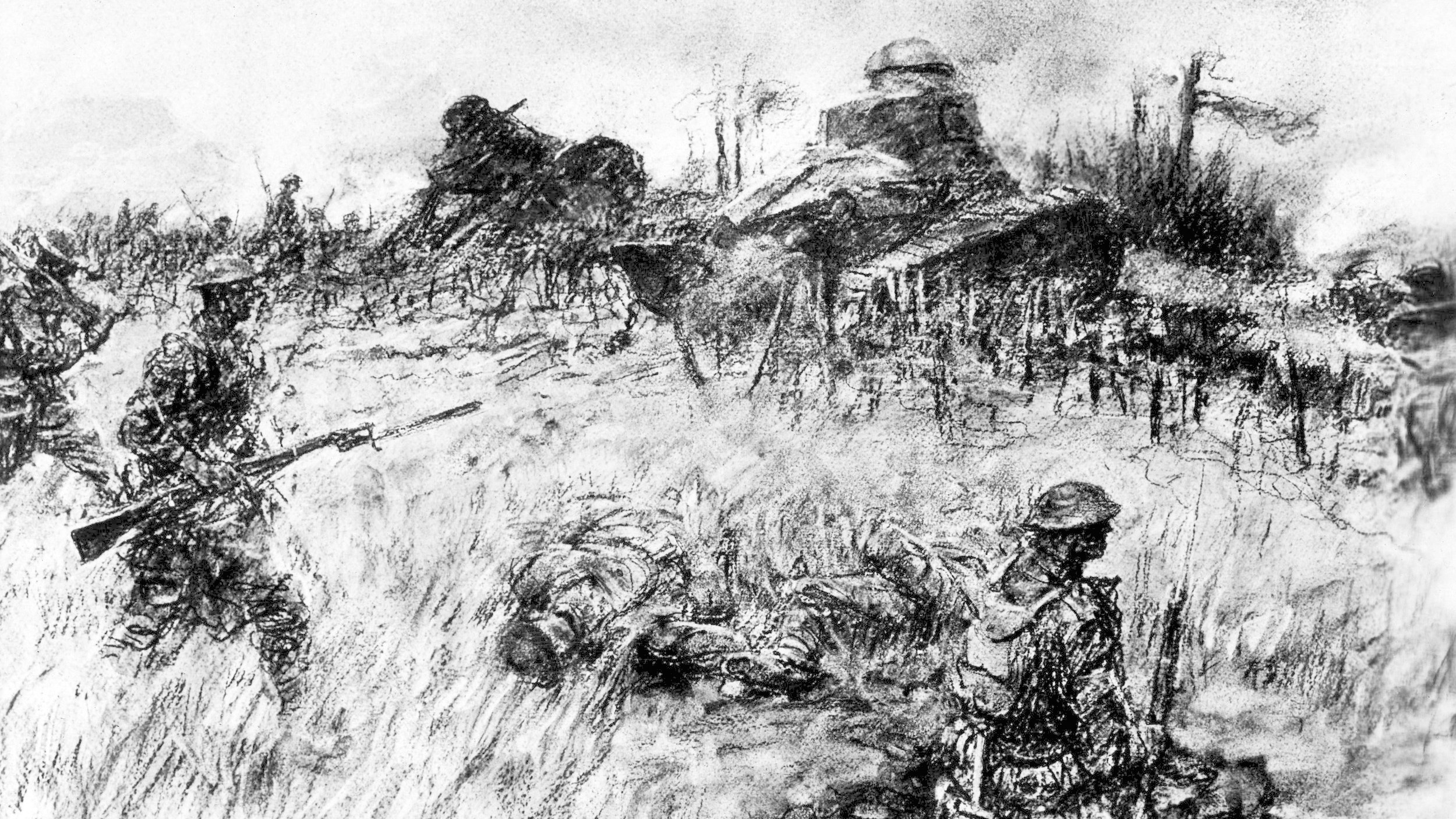
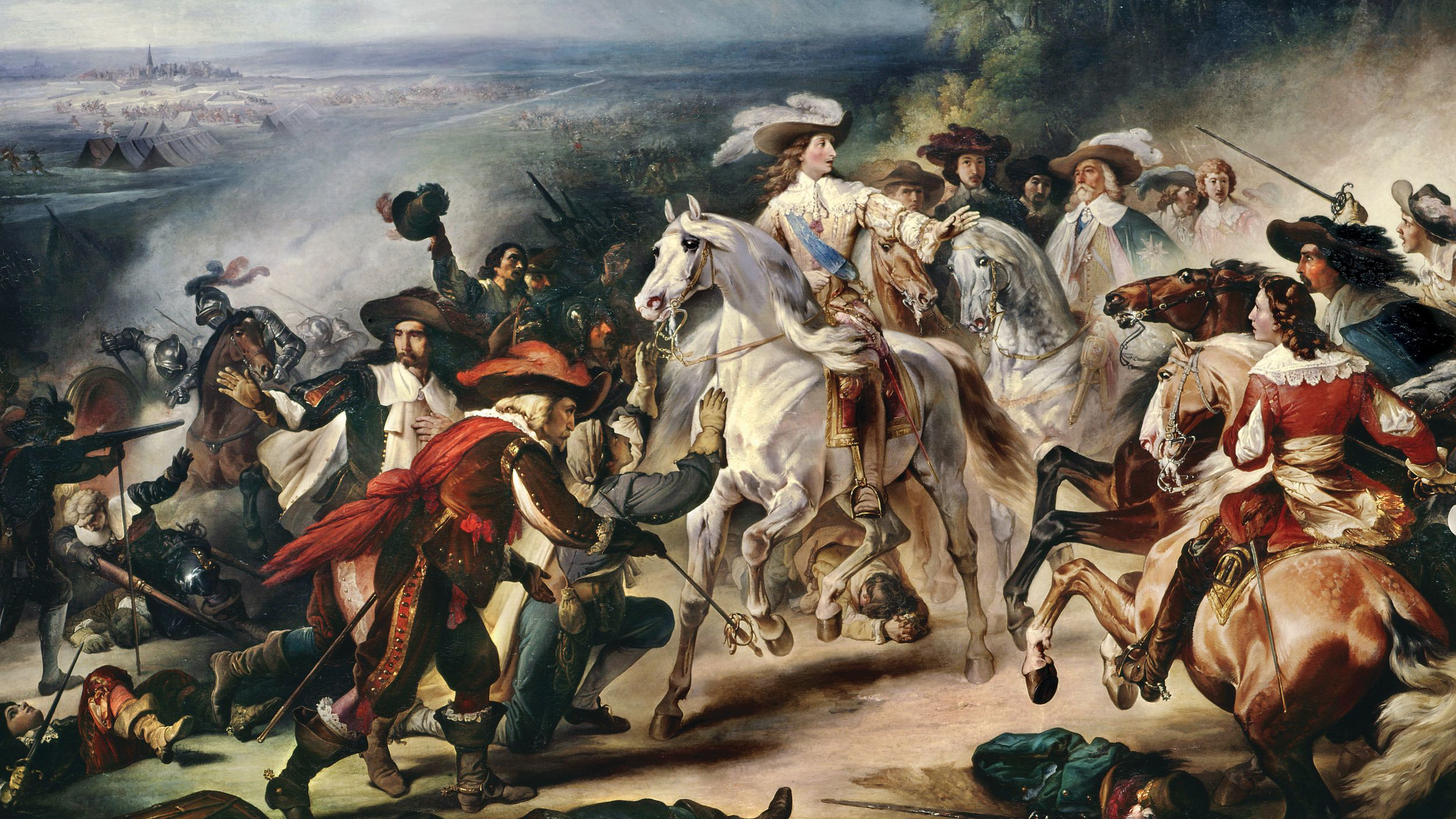
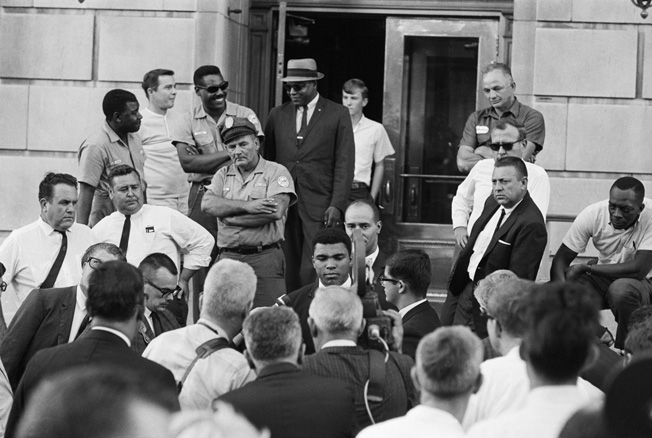
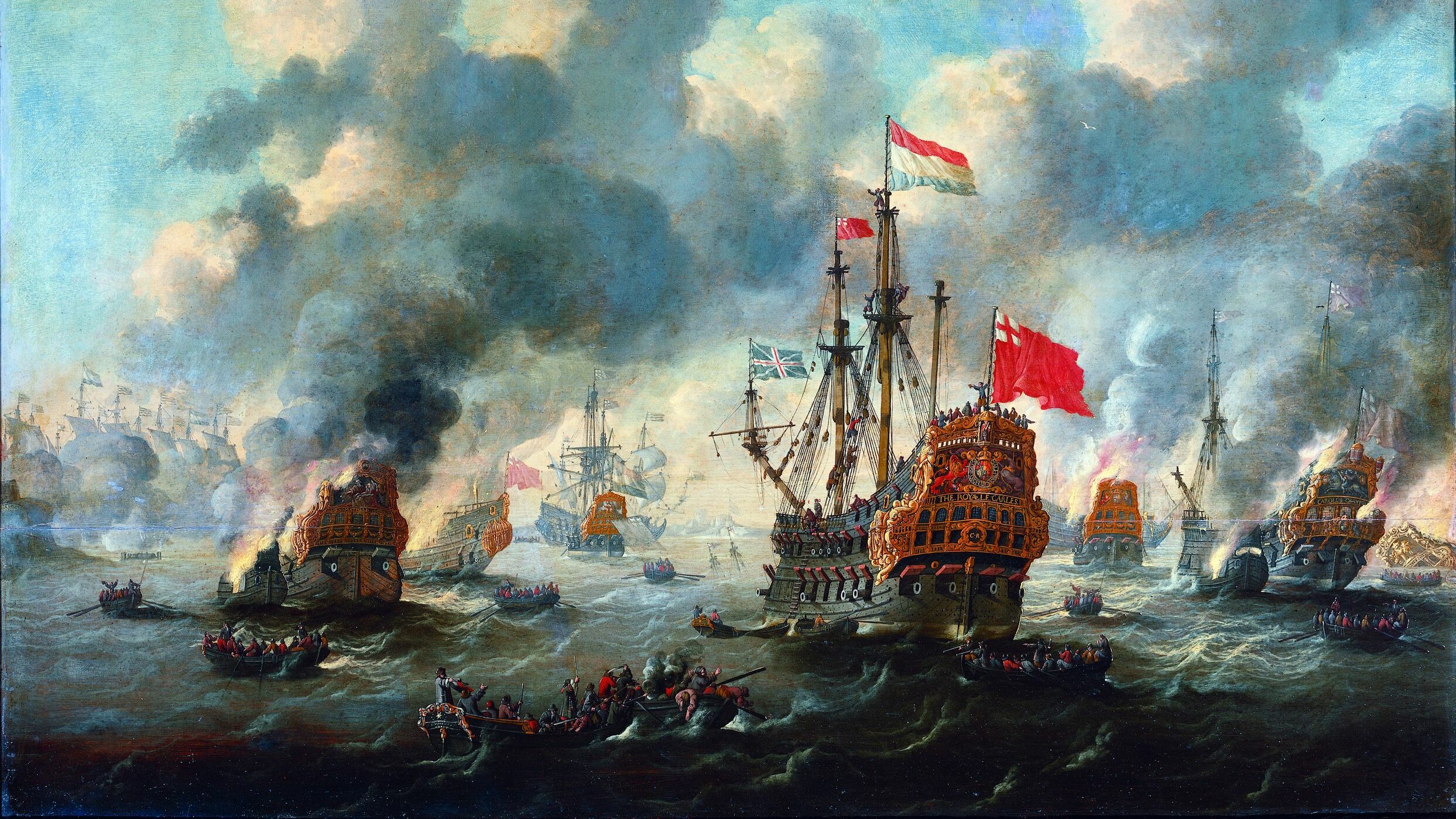
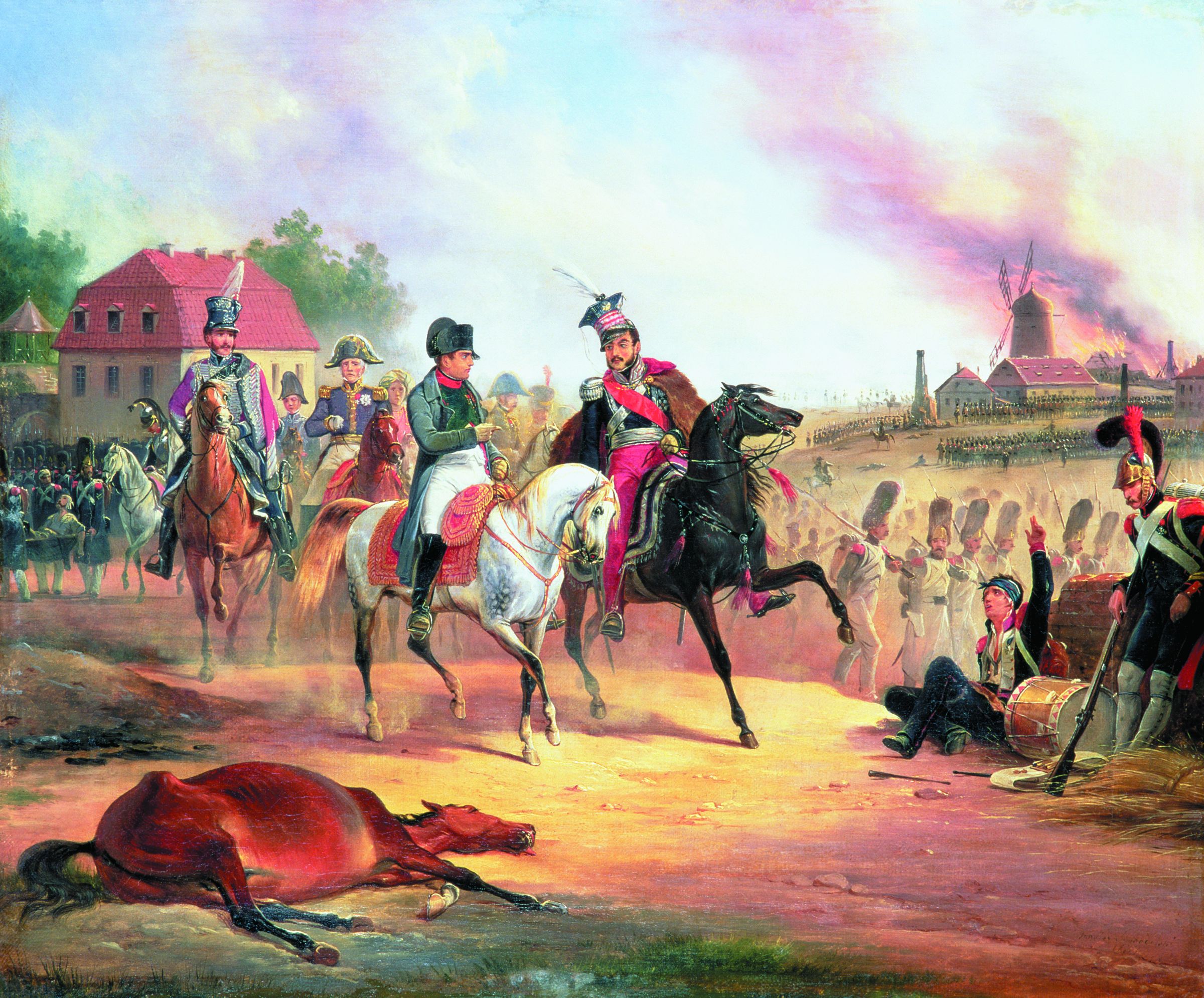
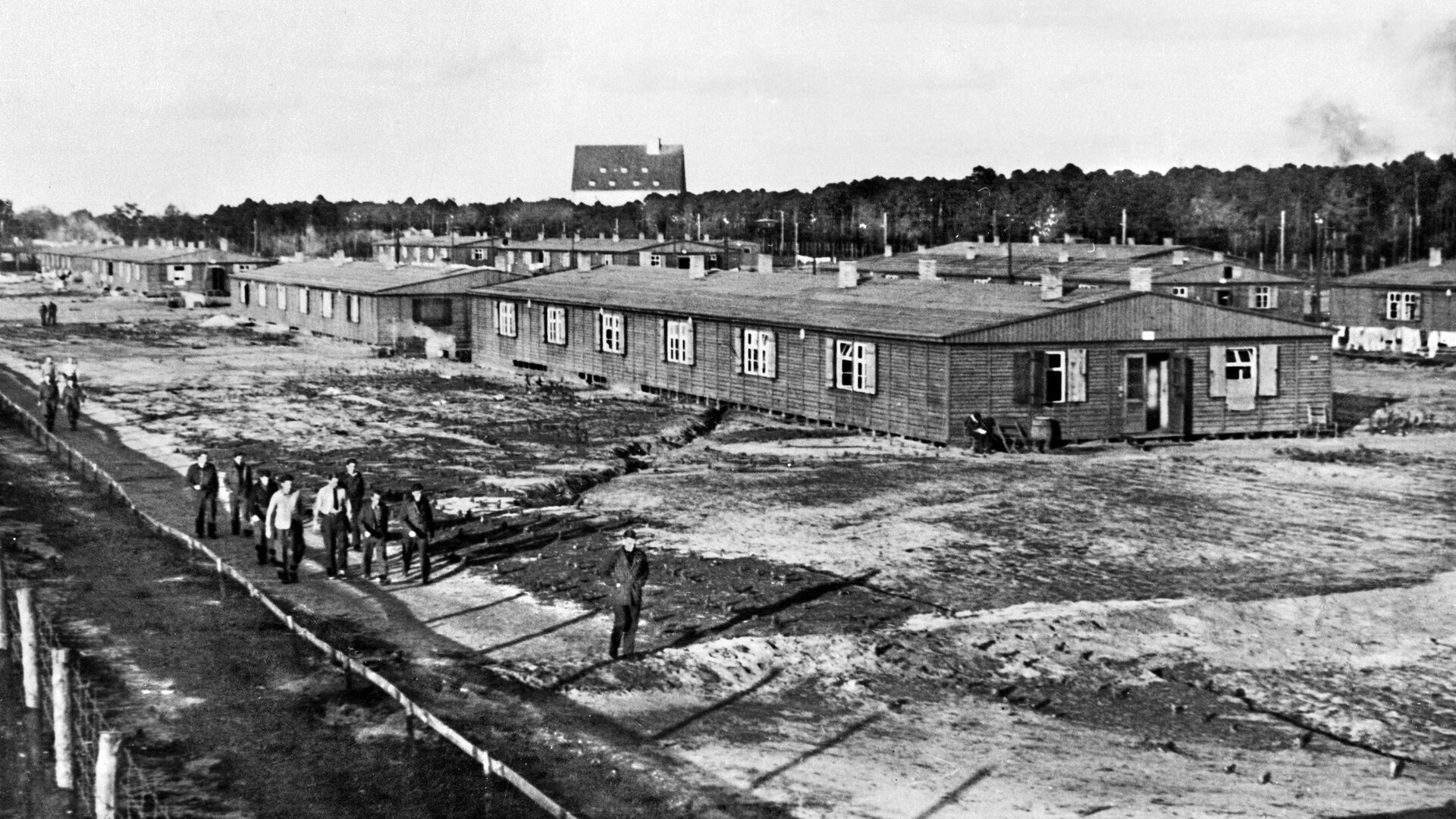
Join The Conversation
Comments
View All Comments